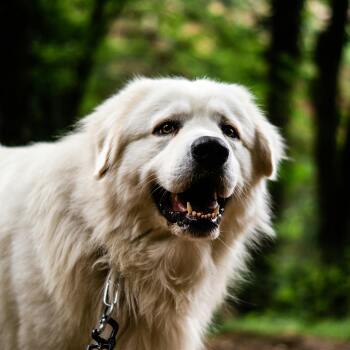Great Pyrenees

Great Pyrenees: Calm, Courageous, and Always Watching Over You
With their thick white coats and noble stance, the Great Pyrenees is as striking as they are steadfast. Don’t let their gentle nature fool you—these dogs were bred to protect, and they take that responsibility seriously.
Loyal Hearts and Watchful Eyes
The Great Pyrenees is a dream for families seeking a calm, steady companion. Known for their devotion to their people, these dogs are especially good with children and thrive in homes where they’re trusted and included. Confident and courageous, they’re natural guardians—ready to defend your home with a deep bark and a whole lot of heart.
They’re also intelligent, independent thinkers. That sharp mind can be both a blessing and a challenge, especially when it comes to training. But with patience and consistency, they can be incredibly reliable and responsive partners.
Things to Know Before You Bring One Home
These pups come with a few quirks that are part of their charm. Great Pyrenees tend to be vocal and may bark to announce anything they find suspicious (which could be a squirrel or a breeze). They’re also sensitive and mature slowly—emotionally and physically.
Their thick coats shed heavily and are best suited for cooler weather. In warm climates, they’ll need extra care and cool-down options. You may also notice a bit of drool, and yes, they can be a little gassy—just part of the package with these lovable giants!
Socialization is key for this breed. They were born to protect, which can sometimes come across as aloofness or suspicion toward strangers or other pets. Early introductions and positive reinforcement can help your Pyr stay confident and well-adjusted.
A History Rooted in Protection
The Great Pyrenees was developed in the Pyrenees Mountains of France, where they served as livestock guardians. Their keen instincts and calm presence made them invaluable for centuries—and even earned them a spot guarding royal estates.
Though they may not be chasing off wolves these days, they haven’t lost their sense of duty. With proper care and a secure environment, these dogs can thrive as both companions and guardians. Expect a loyal friend with a big heart and an even bigger bark.
Health Concerns in Great Pyrenees
- Bloat (GDV)— This large, deep-chested breed is at risk for gastric dilatation-volvulus (bloat), where the stomach twists and fills with gas. Symptoms like restlessness, retching, or a swollen abdomen require emergency care. Preventive surgery is available and worth discussing with your vet.
- Bleeding Disorders— Great Pyrenees are predisposed to clotting issues like Von Willebrand’s Disease. Since this often isn’t detected until surgery or trauma, we recommend blood tests before any planned procedures.
- Joint and Bone Disorders— Hip and elbow dysplasia, patellar luxation, and osteochondritis dissecans (OCD) can affect their comfort and mobility. Regular check-ups, weight management, and joint-supportive diets are helpful. Young dogs may also experience eosinophilic panosteitis (“growing pains”), which usually resolves with age and treatment.
- Wobbler Disease & Neurologic Concerns— Neck instability from narrowed vertebrae can lead to balance issues. Treatments range from physical therapy to surgery. Degenerative myelopathy, a progressive neurologic condition, can also occur in senior dogs.
- Eye Conditions— Pyrs are prone to cataracts, entropion (inward rolling eyelids), distichiasis (extra lashes rubbing the eye), and general eye inflammation. These can lead to discomfort or blindness if untreated. Routine eye checks are essential.
- Heart Issues— Some Pyrs may develop structural heart defects or conditions like aortic stenosis. Coughing, fatigue, or fainting during exercise are warning signs that warrant further testing.
- Addison’s Disease— This adrenal condition affects hormone production and can mimic many other illnesses. If your dog seems weak, lethargic, or has GI upset that comes and goes, talk to your vet. Bloodwork can confirm the diagnosis and guide treatment.
- Diabetes— Though less common in Pyrs, diabetes is still a concern. Signs include increased thirst, urination, and appetite with weight loss. Management includes insulin and a structured diet.
- Dental Issues— Misaligned or missing teeth (oligodontia) can interfere with eating and cause oral pain. Dental exams are important, and in some cases, orthodontic care is possible for comfort.
- Allergies & Skin Conditions— Pyrs often show allergic reactions through itchy skin, especially around the belly, feet, and ears. They may also suffer from pododermatitis (paw infections) or demodectic mange if their immune system isn’t keeping mites in check. Consistent grooming and vet-directed care help manage flare-ups.
Ready to Learn More? We’re Here to Help!


